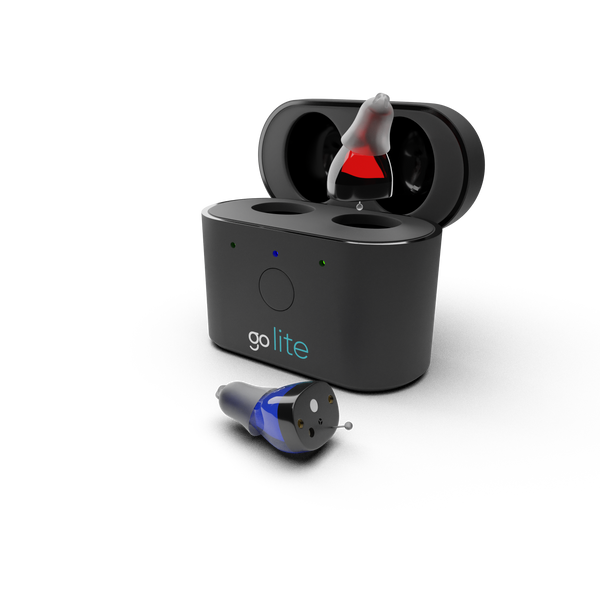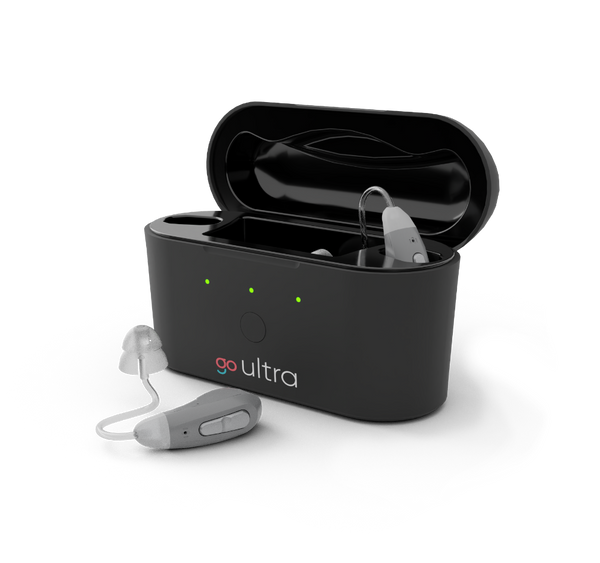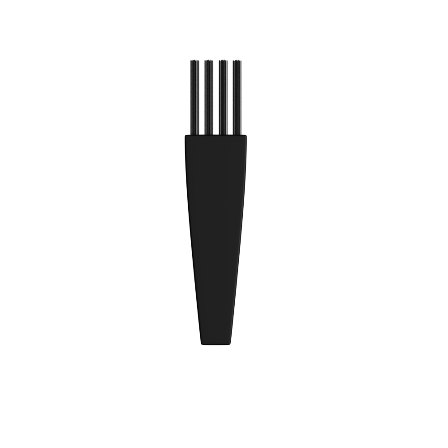Before making a choice between a behind-the-ear (BTE) or in-the-ear (ITE) hearing aid, it will help to understand what makes them different and how your listening experience compares. What’s important to know is that the name refers to the two different form factors, and the form factor of the hearing aid has an effect on both your listening and wearing experience. We’re going to explain to you what those are, but let’s begin with the basics.
What is a hearing aid
Before we get into the differences between behind-the-ear vs. in-the-ear hearing aids, we should first take a look at what a hearing aid is. Simply put, a hearing aid is a device that is used to enhance the hearing ability of someone who has hearing loss. There is a wide range of hearing aids, with different functions and features. For this article, we’re going to only compare behind-the-ear and in-the-ear hearing aids.
Behind-the-ear hearing aids
A BTE hearing aid is a device that comprises a hard plastic outer shell that houses all the main components of the hearing aid, with a thin, flexible tube, or slim tube, that sends the processed audio to your ear. The body of the hearing aid houses the microphone and audio processing equipment and is where most of the magic happens. After the audio is processed, it is sent via the slim tube into your ear. The Go Ultra OTC hearing aid is an example of a BTE hearing aid.
The main benefit of a BTE hearing aid is that there is more space available in the shell to add advanced features such as Bluetooth, and improved audio processing technology. This typically results in higher-fidelity audio, with convenient features that enhance convenience.
Thanks to the expanded size, BTE devices can typically hold larger batteries, especially in the case of rechargeable BTEs, giving you more usage time before you need to recharge them or replace the batteries.
There are some drawbacks to BTE devices to consider as well. The main issue is that they can be quite bulky, and some may find them uncomfortable at first to wear. As they sit behind your ear, they could potentially place some strain on the ear as a result.
Due to the placement, they are rather noticeable as well, which could be a problem for those reluctant to wear a visible device. For people who wear glasses, discomfort around the ear can increase as there is an additional device placing strain on the ear. Keep in mind thatthese issues are typically resolved in the first two weeks or so, it may just take time to adjust to them.
There is an alternative form of BTE hearing aids, called receiver-in-call (RIC) hearing aids, or “mini-BTEs”. These BTE variants shift the receiver - a tiny speaker that actually delivers the processed audio signal to your ear - from the body of the hearing aid to the tip of the slimtube inserted in your ear.
What makes RIC hearing aids different is that the body of the hearing aid is smaller to traditional BTE hearing aids, and the sound experience can be clearer because of the receiver being placed in the ear canal. The smaller body means there is less strain on the ear, so these hearing aids can feel more comfortable.
In-the-ear hearing aids
An in-the-ear hearing aid also comprises a plastic shell that houses all the main components of the hearing aid but rather than sits behind the ear with a tube, the body of the hearing aid is placed directly in your ear. There are a variety of ITE hearing aids, with some that sit just inside the ear, and others that sit all the way inside your ear canal. The Go Prime OTC hearing aid is an example of an ITE hearing aid.
The main benefit of an ITE hearing aid is its discretion. In most cases, an ITE device is discreet, perfect for those who do not want others to easily spot if they have a hearing aid. Many ITE devices are almost invisible (such as the Go Lite and Prime hearing aids) so unless there is someone who is really paying attention to your ear, it is unlikely that they will notice them.
Another significant benefit of ITE devices is that they place less strain on the ear than BTE devices. Since there are no wires that plug into your ear, or bulky plastic shells to sit behind your ear, there is less stress on your ear. They’re a great option for those who wear glasses because they will not clash with your lens frames behind the ear, which results in increased comfort.
One disadvantage of ITE devices, is that due to their limited size, they cannot house as many features as BTE devices. It’s worth taking a good look then at what features are offered by the ITE, to ensure that you’re not missing out on anything that is crucial for your lifestyle and needs.
For example; you might not be able to have a Bluetooth-enabled ITE device that streams music and phone calls, with high-fedility audio, a large battery, as well as complex features such as noise reduction, clarity, and so on. You could, most likely, have all those features in a single BTE device because of the increased size but an ITE device will need to sacrifice some features for others.
Which hearing aid is best for me?
Determining which hearing aid is best for you will depend on what you are looking for from your hearing aid experience. If you are looking for s hearing aids that are packed full of features, with a long battery life, and you don’t mind having an external, visible device, then BTEs are probably going to suit you best.
If, on the other hand, you value discretion above all else, and are willing to compromise on a few extra features, then ITE devices are going to be an excellent choice. If you wear glasses and are looking for something that will not interfere with them, then ITEs will be perfect for you.
Another good reason to look at ITE devices is that they are much better suited for those who have active lifestyles. BTE devices are external devices, so it’s possible that they could fall off your ear during the day. Since ITE devices fit rather snugly inside your ear, they are more likely to stay in place while you are out and about doing physical activities.
At the end of the day, it’s a matter of preference and choice. Just remember to think carefully about what features and form factors will make the most sense with your lifestyle and needs. It’s important that you are able to get the most out of your hearing aids.
Go Hearing Aids
Go hearing aids are a very good option if you’re looking for a hearing aid that is suited to more physical activity. They are small, in-the-ear devices that arrive ready to wear and can last up to 30 hours with each charge. With customizable buds, they ensure a snug, comfortable fit for most ears. The small rechargeable charging case is also convenient to carry them in because you can charge them while you’re busy with your physical activity.
Get your Go Lite or Go Prime hearing aids here or by phoning (302) 754-3190 and speak to a Go Hearing product expert.









